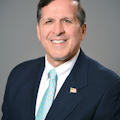Takeaways from top dental practices: Strong hires, low patient attrition, controlled overhead
Part one of this series discussed the findings of Levin Group’s 30-year ongoing study of the top 10% performing practices. The objective of this study was to identify the best strategies and ideas for practice improvement, and the first installment discussed three important findings. The first was that the dentists of top 10% practices weren’t necessarily characterized by having some type of unique or superstar capability. They were dentists who gradually figured out how to continually improve their practice performance.
The second important finding was that most practices didn’t move into the top 10% overnight; instead it was a gradual process, taking them approximately seven years on average. Finally, the third thing our study found was that the top 10% practices have excellent systems that allow for high levels of efficiency. This was expected given that low efficiency would make it impossible for any practice to reach the highest levels of performance.
Part 1 of this series: Takeaways from top dental practices: It’s not about superstars
Part 3 of this series: Takeaways from top dental practices: A commitment to office culture and values
We recognize that a good number of practices won’t have a desire to move into the top 10% and are still very successful. However, it’s always our aim to give every practice the opportunity to improve performance, and our findings from the top 10% have allowed many practices to increase production, profit, and efficiency. Here's a look into more valuable lessons from top 10% practices that can further your efforts to improve your practice.
Higher staff longevity
In any business, the staff is critical to success. It’s a myth that any geniuses got to the top all by themselves. Bill Gates did not build Microsoft into a tech giant all on his own, Mark Zuckerberg did not make Facebook a household name without help, and, although Disney bears his name, Walt Disney didn’t build it into an iconic entertainment brand alone. Perhaps one of the greatest examples of building a successful international business based on employees is The Ritz-Carlton. The Ritz-Carlton is renowned for incredible customer service, which is entirely due to the employees.
Now that we’ve established how important your staff is, you should know that on average, the staff longevity of top 10% practices is eight to nine years higher than most other practices. In understanding this phenomenon, one may think that the top 10% performing practices pay higher salaries or are just plain lucky. However, our findings showed that top-performing practices had higher staff turnover in their early years than most other practices. We came to realize that the reason for this was that these dentists simply wouldn’t accept poor-performing team members and allow them to continue in their positions.
Top-performing dentists were willing to recruit, interview, hire, and train new team members until they found the right fit. Naturally, each hire was expected to perform well. However, when a team member fell short in performance, was given the appropriate coaching, and still couldn’t perform at a reasonable level, he or she was replaced. For whatever reason, these dentists couldn’t tolerate bad performance, and in most cases, it had nothing to do with the quest of becoming a top 10% practice. We suspect it had more to do with the personality of the dentists. They just refused to accept poor or even mediocre performance from a team member.
Through careful recruitment and hiring, top practices can attract team members that are excellent in their jobs, have the right attitude, and are willing to change and grow. Many of these team members commented on how much they enjoyed being part of a practice that allowed them to do their jobs and listened to their ideas. And most of them have been in the practice for several years and have been through changes in software, technology, insurance, and infection control. Yet their attitudes seem to be just as positive as they were in their first year in the practice. We’re not certain, but we think that team members with a willingness to change are also a contributing factor in practices that move into and stay in the top 10%.
Lower patient attrition
You may figure that top 10% practices are in the top 10% because they have a larger patient base than the average practice. This is partially true, but they didn’t suddenly have a large patient base and then jump forward into the top 10%. As previously stated, it took approximately seven years for a top 10% practice to move into that category, and in some cases it took much longer. Having a large patient base was only one of the many important characteristics that we have found in top 10% practices. The important point is that the patient base was built gradually.
We have seen many practices that have become extremely busy in a very short time. And while these practices are doing well, most of them weren’t in the top 10%. One of the reasons that practices may become so busy is that they have inefficient scheduling and other systems that create a scenario where they max out early. They don’t make necessary accommodations or modifications to handle more patients, and their growth simply flattens out. So, a fast-growing patient base is not necessarily commensurate with moving into the top 10%.
If top 10% practices built their patient bases gradually, how were they able to outpace the patient bases of other practices? One of the key findings was that top 10% practices have approximately half of the attrition rate of most other practices.
In maintaining a strong level of new patients, it’s interesting to note that very few top practices used outside marketing firms, and most did no marketing at all. Once again, we have seen many practices that have made significant investments in their marketing and have done well, but not moved into the top 10%. This is not to say that investment in marketing isn’t a good strategy, but merely an observation that top 10% practices have strong patient referrals often without sophisticated marketing programs.
So, how do they attract these new patients? We believe that top 10% practices maintain a strong and steady stream of new patients in part because of the culture of the practice, the attitude of the doctor and team, and a high level of customer service. We will cover customer service in the third part of the series, but it’s important to emphasize that top 10% practices typically have very positive environments that are engaging to patients. Although we found that many top 10% practices didn’t have any formal marketing program, they did emphasize a positive environment, effective patient relations, and excellent customer service. Customer service was often accounted for and built into the systems that allowed the practice to be efficient and have higher production than most other practices.
Controlled practice overhead
We found that most top 10% practices had very good controls on purchasing and spending. There was a focus on maintaining overhead at targeted levels. Being larger, these practices had the opportunity to negotiate better pricing on supplies and equipment, usually paid for their purchases upfront to avoid debt and interest payments, and had at least one team member who was an expert in ordering.
For example, I recently read about a practice that had software controls on what the staff member in charge of purchasing was allowed to order. This may be a positive feature to help control spending, but it also limits the empowerment and capability of that staff member. Top 10% practices usually have a purchasing staff member who understands the parameters and takes overhead controls seriously. We were impressed with how diligent and systematic these staffers were in their ordering, using a wide range of different techniques. Although we could debate the efficiency of their varying approaches, the main takeaway was that these individuals understood how to stay within budget, when to negotiate, and how to get the best pricing for their practice.
There was also a focus by the practice on maintaining overhead in other categories. Most had a monthly overhead review by the office manager or doctor, and categories that weren’t within a reasonable range as defined by the practice were addressed. Some of the top practices operated like larger businesses by bidding out top expenses each year to determine the market rate and whether changes were needed, capping staff compensation increases but adding bonus systems for performance to move toward a variable expense from a fixed expense, and making the necessary changes to keep each category in line. These practices weren’t perfect, but they did have a strong focus on maintaining overhead control, which is a crucial part of the discipline of running an excellent practice.
Summary
Top 10% practices are significantly better than most other practices when it comes to staff longevity, maintaining a large patient base, and controlling overhead. These areas of practice operations are important factors in practice success and should be consistently addressed and improved upon.
In part three of this series on top 10% practices based on Levin Group’s 30-year study, we will focus on top 10% leadership, the role of the office manager, and customer service.
Editor's note: Originally posted in 2021 and updated regularly
About the Author
Roger P. Levin, DDS, CEO and Founder of Levin Group
Roger has worked with more than 30,000 practices to increase production. A recognized expert on dental practice management and marketing, he has written 67 books and more than 4,000 articles, and regularly presents seminars in the US and around the world. To contact Dr. Levin or to join the 40,000 dental professionals who receive his Practice Production Tip of the Day, visit levingroup.com or email [email protected].

